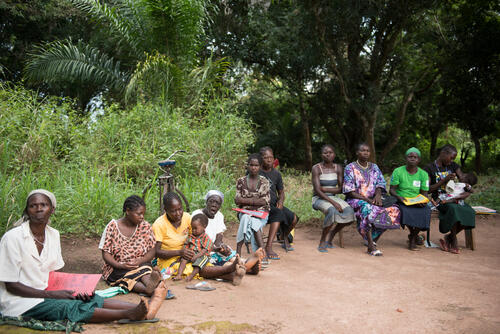- For people in rural South Sudan, HIV testing and antiretroviral (ARV) therapy can be nearly impossible to obtain.
- Moving between villages is extremely difficult and the war has forced many to flee to isolated locations.
- In Yambio county, in the southwest of the country, mobile and same-day testing and treatment, provided by Médecins Sans Frontières (MSF), is improving the lives of people living with HIV.

“In the past, there was very little treatment for people living with HIV in the area. The sick just suffered and died,” says Arkangelo Ruben, a tribal chief and community leader from South Sudan's Western Equatoria region.
“Reaching a drug dispensary usually took several days. Things got worse when the fighting started; many fled to areas without healthcare.”
MSF had previously worked in Yambio and wanted to examine the best way of providing effective antiretroviral therapy to the population. Here HIV prevalence in Yambio is estimated at 3.4 per cent, well over the national average.
Responding to the challenge
To meet this challenge, MSF initiated a 'test and treat' pilot programme with the support of the Ministry of Health. It has been running for two-and-half years and will finish in June 2018. Two mobile teams are running six centres where people are tested and receive treatment in the surrounding countryside.
“Rather than make patients come to a distant dispensary, our service calls into rural communities at set times,” says Farhan Adan, MSF project coordinator in Yambio.
“A patient could be tested and have the results in a day. Treatment can start immediately. Counsellors are on hand to explain how HIV will impact patient´s lives.
“While this concept is new to this region, the 'test and treat' approach has been tried in other parts of Africa and was first introduced by the WHO. The big difference with this project is that Yambio is in a conflict setting. From time to time violence flares, leaving populations cut off from the outside world.”
Raising awareness
“In the early days, we had to go to each house explaining the service. Sometimes families lived in very isolated parts of the forest; our teams had to walk for hours to find their huts,” explains Isaac Zinaro, MSF’s community health worker supervisor.
“Now people know when we are in their village.”
The most recent figures are promising. Between June 2015 and the start of November 2017, 14,804 people were tested for HIV. Of these, 505 tested positive and 401 were enrolled in the programme.
Patients have unbroken access to medication. Often, patients receive a supply to last three months, even if their villages are cut off. A volunteer or focal point is selected to collect the drugs for a group of patients. These patient groups also serve as support groups, reinforcing the community/patient-centred model of treatment.
“Now my medicine comes to me”
One patient benefiting from the 'test and treat' strategy is Nama Martin, who was diagnosed as HIV-positive 10 years ago.
“I look after 15 children. I don’t have any money and very little time,” she says.
“It used to take me two days to travel to Yambio and back. I had to include the cost of a night’s accommodation. My children were alone. Now my medicine comes to a neighbouring village which is within walking distance.”
As the pilot phase nears its end, a local partner, Catholic Medical Mission Board, is gearing up to take over the project.
“With the Yambio areas covered by our project, the next move is to pass on what we have learned from this pilot programme to other health providers with the help of the Ministry of Health,” says Jaume Rado, MSF head of mission for South Sudan
“Many other communities that have been affected by instability and many displaced people can benefit from what we have developed.”


